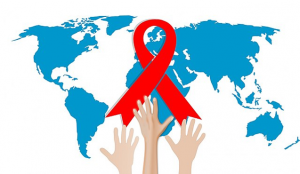Phillip’s Story
Case Study Downloads
Applicable Courses
- Health Promotion and Active Living
- Social Determinants of Health
- Human Anatomy and Physiology
- Human Pathophysiology/Altered Physiology
- Health Research
- Mental Health and Disabilities
Philip’s Story

Phillip was born in a small town in northern Ontario in 1979. His father, Jack, was Ojibway, and his mother, Mary, was Anglican. He was six years old when he became a big brother to Nancy. Phillip was known as a ‘sensitive boy’ when he was younger. He did not have any interest in sports, much to his father’s disappointment. Phillip loved to spend time with his mother, cuddling on her lap, helping her out in the kitchen, and watching her get ready for parties.
Once Phillip started school, some of the other children would bully him, calling him names, physically pushing him around, and ostracizing him when it came time for teamwork.
As the siblings grew older, Phillip would watch his sister Nancy play a number of sports. While his father cheered for Nancy, he also commented to Phillip that “this was what he should be doing if he was a real boy”. Phillip’s self-esteem plummeted. He would often ask himself “what is wrong with me”?
Once he started high school, Phillip felt even more alone and more confused. He was not interested in sports or girls like his classmates. He secretly had a ‘crush’ on another boy at his high school but did not dare to act upon his feelings. By grade 11, Phillip could no longer take the bullying of his schoolmates, whispers and comments from the small community in which he lived, and the disappointment he saw on his father’s face every day.

Phillip enjoyed gardening alongside his mother and she would often go on group walks with her church friends around the neighborhood. She also enjoyed hiking when she could, although it was not something she did very often. Phillip would join his mother on her walks whenever he could, especially after arguments with his father. He was significantly less active than his athletic sister Nancy.
Phillip left the small town in which he had grown up, not telling anyone he was leaving and headed for Toronto. He found a community of individuals that accepted him. It was an exciting time for Phillip, drinking, drugs, and multiple same-sex partners. This reckless lifestyle continued for many years, including drinking and using IV drugs. Phillip went from one relationship to another, often having multiple partners at the same time. He had no contact with his family since he left home, and often wondered if they cared for him. He had called home a number of times, but hung up as soon as someone answered the phone.
When Phillip moved to Toronto, he was no longer motivated to go on walks and preferred his risky lifestyle activities. A sedentary lifestyle paired with risky habits, often left Phillip battling with his health.
It was in the late fall of 2008 that Phillip came down with the “flu”.
His flu-like symptoms included:
- Fever
- Chills
- Rash
- Night sweats
- Muscle aches
- Sore throat
- Fatigue
- Swollen lymph nodes
- Mouth ulcers
These symptoms lasted a few weeks, but eventually Phillip started feeling better. His close friends were concerned about his weight loss and suggested that he get tested for HIV. Phillip was not concerned because he was feeling better, and thought to himself “I use condoms most times, HIV could not possibly happen to me”. He continued with his reckless lifestyle for another ten years.
Phillip had been feeling unwell again. He had lost even more weight, was tired all the time, and noticed ‘blotches’ on his face and in his mouth. (Full list of symptoms in PowerPoint)
After three months with no improvement, Phillip went to a local medical clinic for assessment. The attending physician provided testing to confirm his suspicions of HIV/AIDS.
With positive results, Phillip was referred to a specialist trained in treating HIV.

The specialist ordered further testing to determine the stage of the disease and the best treatment options. He ordered other lab tests to check for a number of infections or complications often related to HIV. Phillip also shared his concerns regarding purple patches that were on his skin and in his mouth.
Unfortunately, Phillip was also diagnosed with Kaposi Sarcoma second to his HIV.
Phillip was distraught over the diagnosis and treatment. He felt like this was a death sentence. After much consideration, he decided to reach out to his sister for support.
Nancy was sympathetic, but stated that there was not much she could do to help out as her ‘plate was overflowing’ at present. She did offer that Phillip could come for a visit once a month, but when he found out his parents were living there, he quickly declined the offer.
Phillip contemplated trying to reach out to his father’s people. He had struggled all his life, not feeling like he belonged. Would they accept him?
Philip began to struggle with social anxiety and depression due to his diagnosis. He has not found social support in his family but is determined to follow through with the treatment regimen prescribed by his physician. He reconnected with an old partner who shares some of his struggles. However, Phillip has recently become aware that his partner is diagnosed with lung cancer. This makes him immunocompromised and Phillip has become worried about infecting his partner with HIV overtime.
Phillip is considered a two spirited person (both male and female spirits). Two spirited people were held in high regard. Due to residential schools and the church’s influence on Indigenous people, they were taught that this type of lifestyle was unacceptable. Many communities would not accept Phillip, but they are now starting to come around and realize that this was not their traditional way. If his father’s community was very traditional, he also realized that his drug use could be a problem.
Case Key Words
Key Words: Addiction, AIDS, Biracial, HIV, Homosexual, Indigenous, IV drug use, LGBTQ+ , Risk behaviours, Self-identity, Kaposi Sarcoma, Opportunistic Infections, Exercise, Immunity

